The flying fire-breathing dragons may not exist in our current times, but this bird bearing a resemblance to the mythical creature does seem to come straight out of a fantasy movie! Its dragon-like features, mostly due to the small tufts of fluffy feathers on its head, surely captivates our attention and distinguishes it from other birds in nature.
The Great eared nightjar (Lyncornis macrotis) is a species of nightjar in the family Caprimulgidae and the class Aves, and can be found in southwest India and in parts of Southeast Asia. This nocturnal bird is categorized under five subspecies: Lyncornis macrotis macrotis, Lyncornis macrotis cerviniceps, Lyncornis macrotis bourdilloni, Lyncornis macrotis jacobsoni, and Lyncornis macrotis macropterus.
 Credit: Bhanu Singh
Credit: Bhanu Singh Credit: fly_with_jenisha
Credit: fly_with_jenisha Credit: Dr. Abhilash
Credit: Dr. Abhilash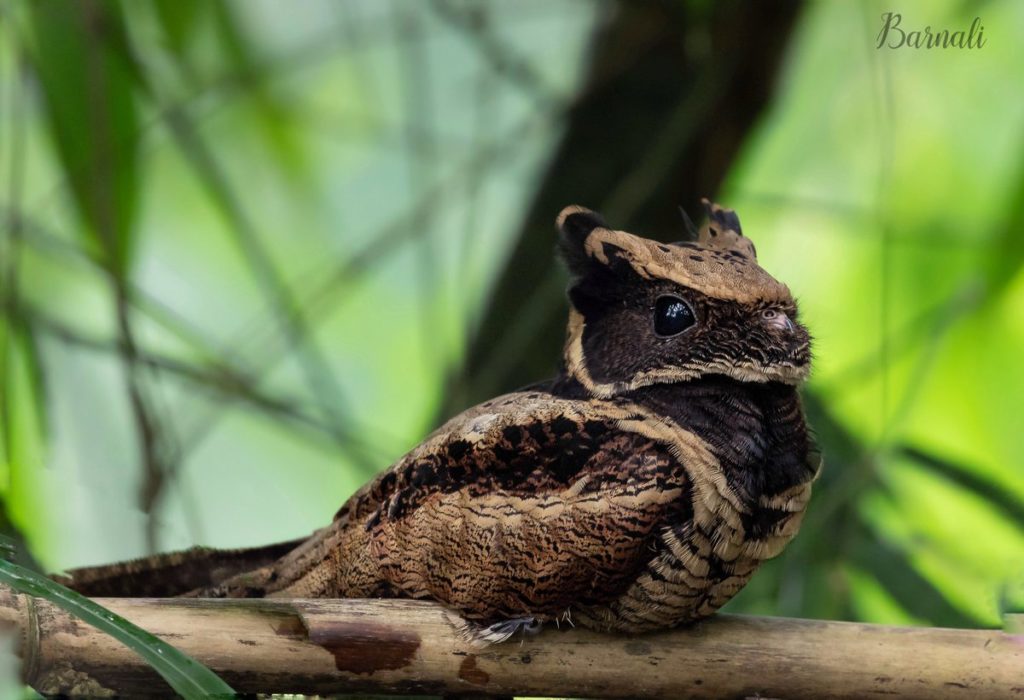
The Great eared nightjar was formally described in 1831 by the Irish zoologist Nicholas Aylward Vigors based on a sample collected in the neighborhood of Manila in the Philippines. The genus name Lyncornis is a combination of the Ancient Greek ‘lunx’, lunkos meaning “lynx” and ornis meaning “bird”. The specific epithet macrotis originates from the Ancient Greek makrōtēs which translates to “long-eared” (makros meaning “long” and ous, ōtos meaning “ear”).

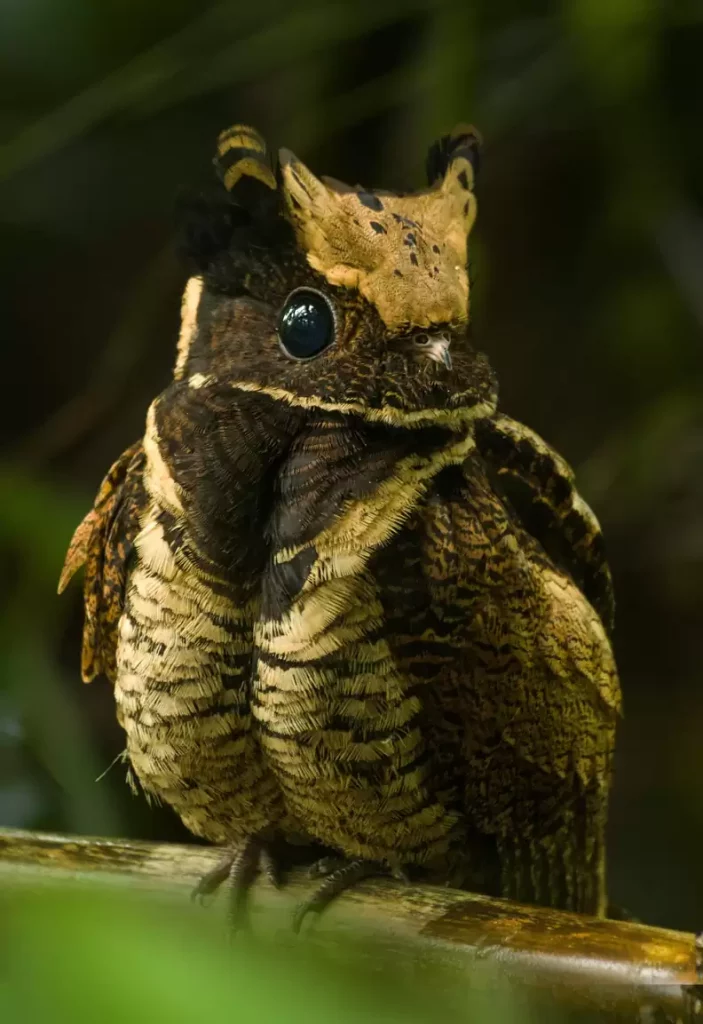 Credit: Naba Choudhury
Credit: Naba Choudhury
With the tufts of feathers on their head, it seem as if they have ears, which contributes to their particular appearance. Their plumage are of complex shades of browns which help them to blend into the background where they are perched, while the coloration also varies depending on the subspecies. These birds have brown upper parts which appear speckled and spotted, and buff-toned underparts with brown barred markings. These speckles and spots are grayish-white, cinnamon, or buff in color. This large nightjar has long barred wings, a white throat band and a noticeably long tail in flight.
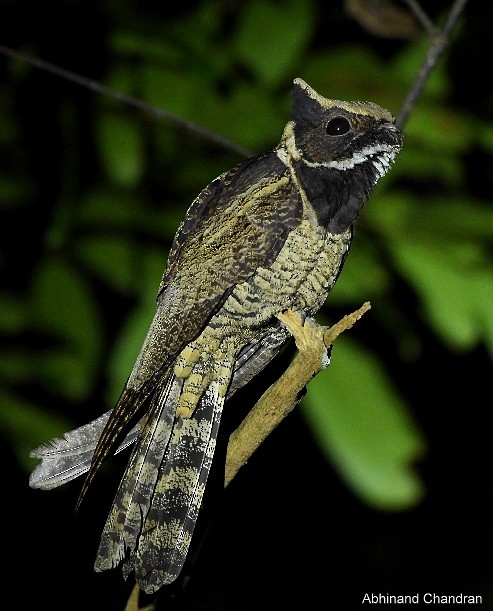 Credit: Abhinand Chandran
Credit: Abhinand Chandran Credit: fly_with_jenisha
Credit: fly_with_jenisha
Being the largest species in the family in terms of length, their size range from 31 to 41 cm (12 to 16 in). Males weigh on average 131 g (4.6 oz) while females weigh an average of 151 g (5.3 oz), making them the second-heaviest species in the family after the nacunda nighthawk.
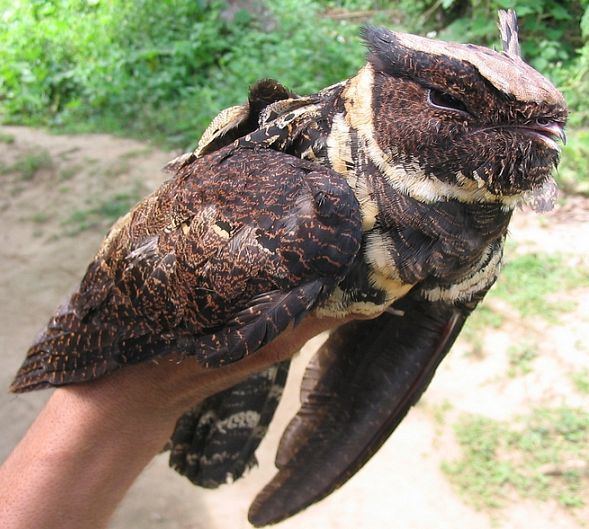
 Credit: fly_with_jenisha
Credit: fly_with_jenisha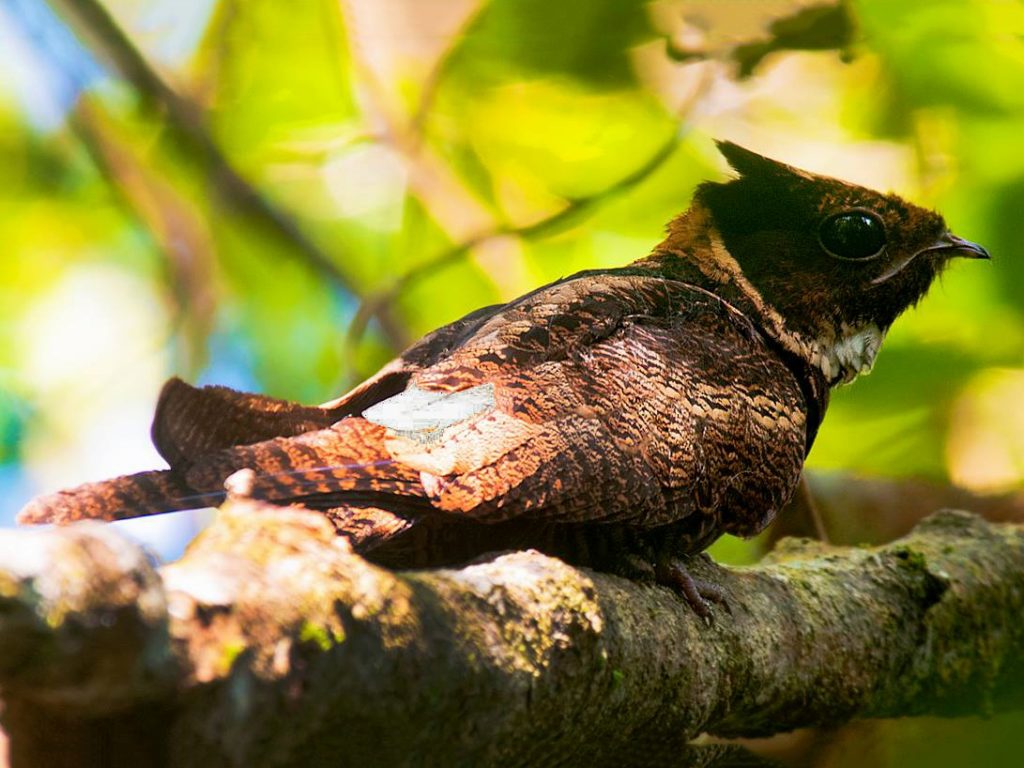 Credit: Biju PB
Credit: Biju PB
The range of Great eared nightjars comprises several parts of Southeast Asia including countries like India, Indonesia, Laos, Malaysia, Myanmar, the Philippines, Thailand, Vietnam, Sri Lanka and Bangladesh. However, the distribution of this species varies for each subspecies. Their natural habitat mainly includes subtropical or moist lowland tropical forests, scrublands, and grasslands, and they can also be found in the forest edges and clearings.
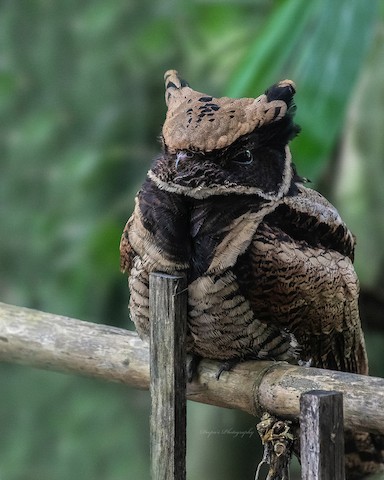
 Credit: Rajkumar Das
Credit: Rajkumar Das
Birds of the nightjar family are usually solitary in nature, and Great eared nightjars are assumed to adopt the same behaviour, although they come together for mating. The breeding season varies depending on the location. For example, in southern India, the breeding season is from January to May. A scrape on the ground serves as their nest and the clutch consists of only one egg, elliptical in shape, and incubated by both parents. In this way, the chick is well camouflaged among leaf litter.
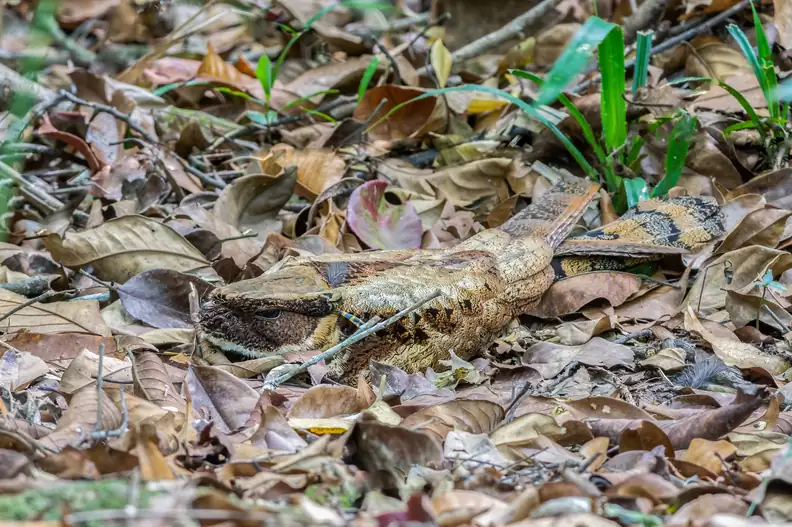 Credit: Narupon Nimpaiboon
Credit: Narupon Nimpaiboon Credit: Ken Behrens
Credit: Ken Behrens
 Chien Lee | Flickr
Chien Lee | Flickr
Similar to other nightjars, these birds are nocturnal, and they have a characteristic call which includes a sharp tsiik followed by a pause and a two-syllable ba-haaww. They feed on flying insects such as moths and beetles, and they are capable of catching their prey while in flight. They hunt by sight, silhouetting their prey against the night sky.
One of their other remarkable feature is their exceptionally wide mouth, with gape extending to below the middle of the eyes, although their beak is small and weak. The sides of the upper mandible, below the lores, are edged with long, stiff bristles projecting outwards and downwards, which increases the effectiveness to ingest insects.
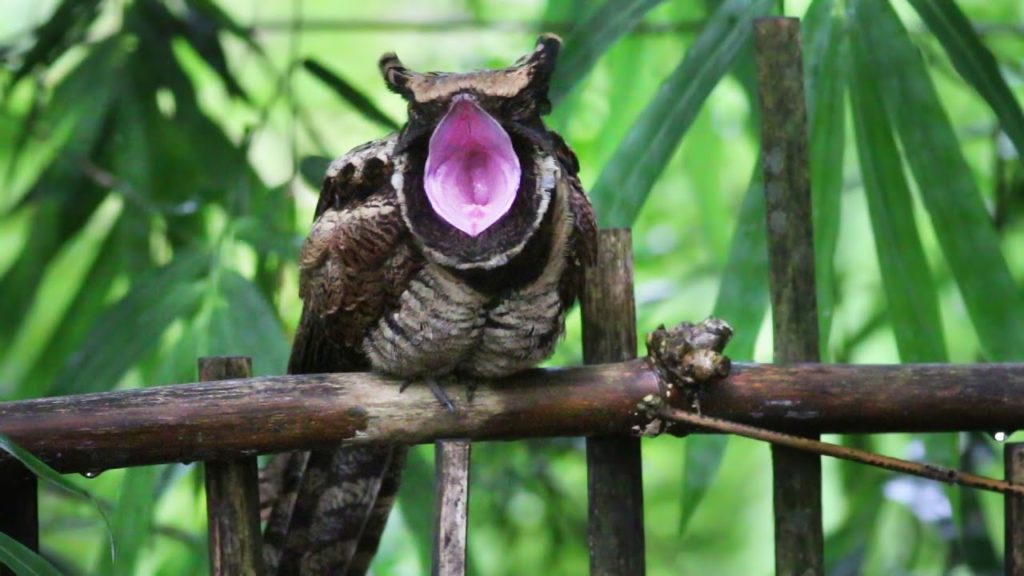 Credit: Porag Jyoti Phukan (youtube)
Credit: Porag Jyoti Phukan (youtube) Credit: Nigel Voaden via Wikimedia Commons
Credit: Nigel Voaden via Wikimedia Commons
This bird species is fairly common in its range and its population appears to be under no threat of endangerment. Therefore, the conservation status of the Great eared nightjar is marked as Least Concern by the International Union for Conservation of Nature or IUCN.
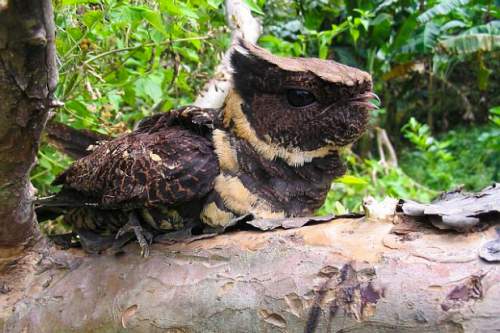
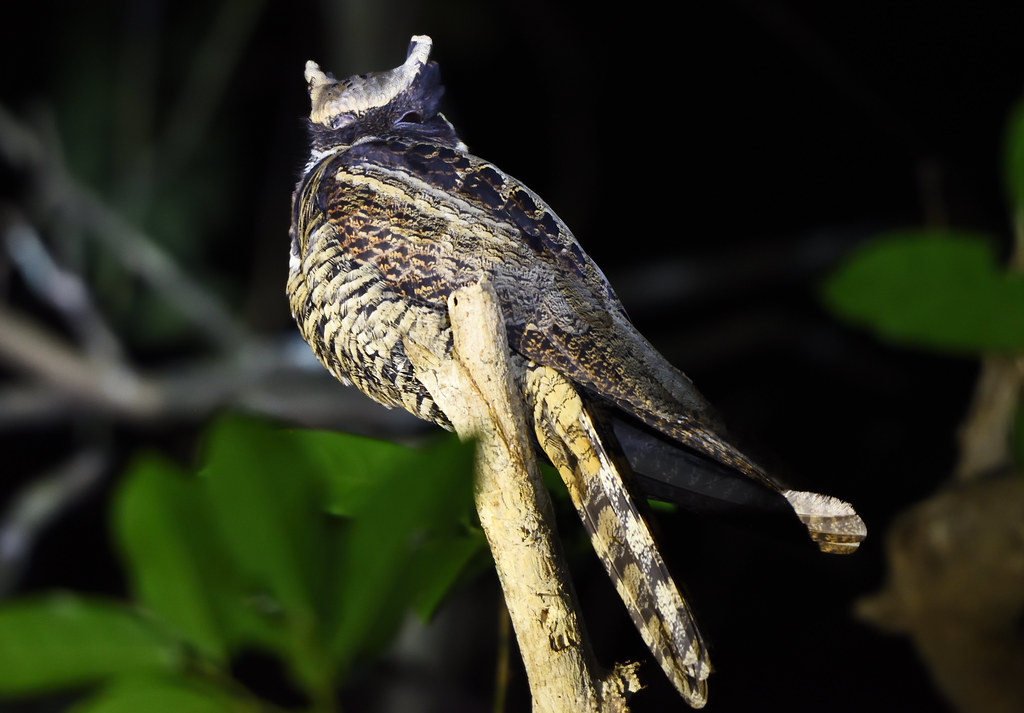 Credit: praveen pandian | Flickr
Credit: praveen pandian | Flickr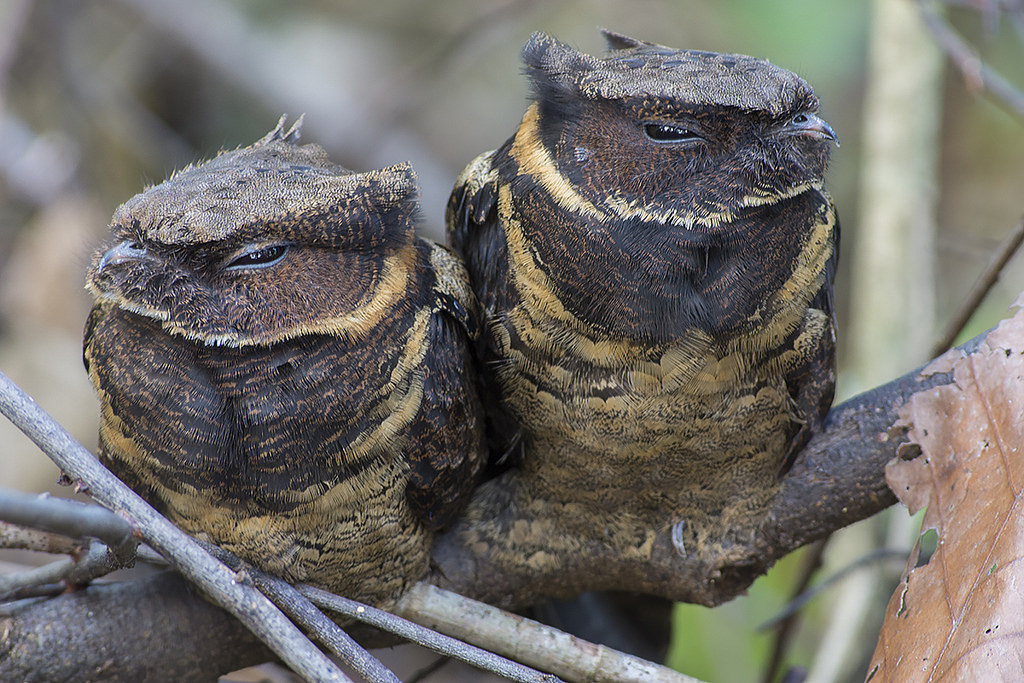 Credit: Benjamin Naden | Flickr
Credit: Benjamin Naden | Flickr








